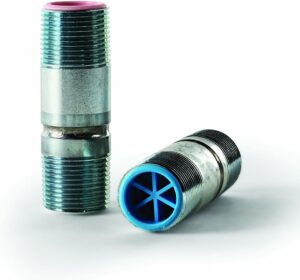Table of Contents
ToggleWhen installing a heat trap or check valve to regulate water flow in a water heater, it is essential to understand their differences. A heat trap is a method through which water inflow and outflow are controlled. It is installed in the pipe attached to the heater. The check valve is used to control the flow of water in one direction only. Check valves prevent the backflow of hot water from the water heater to the cold water.
What is a Heat Trap?
A heat trap valve allows cold water to enter the tanker; on the other hand, it prevents the hot water from outflowing unnecessarily.
Heat trap valves trap the water heater tank from both directions. These heat traps help prevent the water heater equipment from wearing out. Moreover, they increase the efficiency of the water heating system. You will find heat traps very inexpensive and effective in saving hot water from cooling and flowing out. Nowadays, water heaters have built-in heat trap systems. For those water heaters that don’t have heat traps, these valves must be purchased and installed in the water heater.
What is a Check Valve?
Check valves are used when there is high pressure between the hot and cold water sources. Water moves in one direction, and when it turns, the valves close it backward, keeping a steady water flow in just a single way. This function of check valves prevents water from hammering and damaging the water heating system.
Different types of check valves are available in the market for the water heating system, like swing check valves and ball check valves. Both have the same purpose with different designs, specifications, and models. The decision to choose between them should be based on a cost-benefit analysis.
Which one is better: Heat Trap or Check Valve?
Which is the better one to choose, heat traps or check valves? Your needs will determine the answer. Water inflow and water outflow require heat traps. The purpose of a water heating system is only possible with these heat traps. However, if there is a risk of water flowing backward with high water pressure, check valves should also be considered.
We Recommend the Following Heat Traps
1. Camco 01013 Dielectric heat trap

Corrosion is prevented by the self cleaning fittings of Camco heat traps. It comes with a dielectric inert thermoplastic lining and ball check style. The hot and cold inlets and outlets of the camco 01013 heat traps are colour coded. Camco heat trap prevents the escape of heat with the help of its inlet and outlet after air flow is stopped.
The ball check style helps in preventing heat loss and can help make your water heater more energy efficient. It is a simple device with all instructions required to install them. Installing camco heat traps is an easy job that anyone can do.
2. Reliance Silencer Heat Trap Nipples

Made in China, this 3 inch silencer heat trap from AO Smith adds a great value. These are energy efficient heat traps and are an ideal option for inlet and outlet water heater connections. These heat traps are corrosion resistant and are made according to all dielectric water fitting requirements. Reliance silencer heat traps are highly durable and very easy to use compared to other heat traps. Installing it is an easy process.
Heat traps are used in both directions of water inflow and outflow in the water heating system. Whereas check valves are used in a single way to prevent the water outflow from the water heating tank. Both will do fine jobs as they have their own benefits. Whereas check valves give additional protection for the hot water if installed with heat traps as they control one-way water movement. The choice between the two is entirely up to you, depending on whether you need an additional layer of protection or a heat trap to manage the water.

